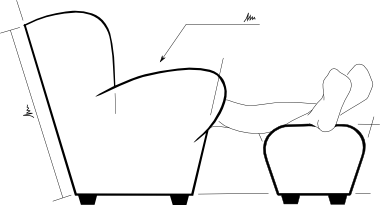Lattice Hinge Test Results
Sine last week’s post about modelling Lattice Hinges, I’ve received the test pieces I ordered and also some very kindly cut by .:oomlout:. (the MDF set gave me some good insight into the hinge performance). I’ve had time to bend some, break some (and figure out why) and take some pictures.
Probably worth a look at last week’s post for details on the parts of the hinge structure (junctions and spring links).
In short: I’m quite happy that the torsion based formula I calculated gave me some hinges that worked, but it looks like the hinge design needs some more parameters.
For defining hinges I’d currently recommend:
[mathjax]
- Calculate the minimum number of links for the material, sheet thickness and link length.
[ n \geq 0.676125 \times \frac{\Theta G t}{\tau_{yield} l} ]
- Calculate the minimum clearance gap for the links to twist freely — if this is less than the width of the kerf of the laser then only one cut is required.
[ k = -t + 2 \sqrt{ \frac{t^2}{2} } \times \cos \left( \frac{\pi}{4} - \frac{\Theta}{n} \right) ]
- Decide the link length from the total hinge width (or the centreline radius of the curve)
[ W = tn + k(n+1) ]
- To keep twisting of the bend joint, limit the spring length to less than four times the sheet thickness.
[ l \leq 4t ]
Symbol meanings at the bottom of the page.
** Obviously, this is not very intuitive as a set of formulas, so I’ll have to generate some graphs/tables that give more succinct design guidance. And some more test pieces to validate them.**
Test Results
Of all the test cuts in acrylic, I was able to bend all 4 samples to 90⁰, which suggests that the formula for calculating the number of spring links for the hinge is successful in limiting the material stress. However, the longer the spring connection samples were not very robust.
The long connection length allowed the top edges of the hinge to splay outwards during bending, adding a bending moment to the outer junctions of the hinges and causing several of the samples to break.
As a result of this, I’d recommend limiting the length of the spring connections to less than fours times the thickness of the material sheet.
[gallery link=”file”]
Link Clearance
When each link twists, because it is square the corner rotates into the space between the links. The greater the rotation of the links, the larger the clearance between the spring connections needs to be to stop two links from contacting.
By adjusting the number of links in the hinge, It’s possible to reduce the twist of each spring connection and keep the clearance required to less than the width of the kerf of the laser that is used to cut the hinge. This means that it can be possible to use just a single cut between each link, reducing laser time and cost.
Link clearance can be calculated by determining the lateral movement of the corner of each junction during twisting:
[ k = -t + 2 \sqrt{ \frac{t^2}{2} } \times \cos \left( \frac{\pi}{4} - \frac{\Theta}{n} \right) ]
Balancing the number of spring connections and the clearance between them has an effect on the total width of material used as the bend (and therefore on the radius of the resulting curve), so knowing the total hinge width will help to allow an informed decision on whether it’s best to: increase the number of links the keep a single cut clearance; or have fewer links and wider clearances between them to keep the hinge from binding.
[ W = tn + k(n+1) ]
Nomenclature
(k) = Clearence gap (m) (l) = Connected length (m) (n) = Number of links in series (t) = Material thickness (m) (G) = Torsional Modulus of the material (Pa) (J’) = Polar Moment of Inertia for non-circular sections (m4) (T) = Torque (Nm) (W) = Total hinge Width (m) (\Theta) = Total bend angle of the piece ((\Theta = \theta \times n)) (\theta) = Angle of twist per link (radians) ((90° = \frac{\pi}{2}) radians) (\tau) = Torsional Stress (Pa)
